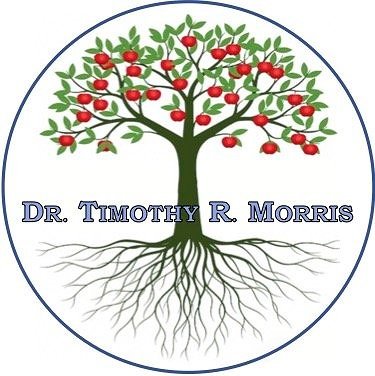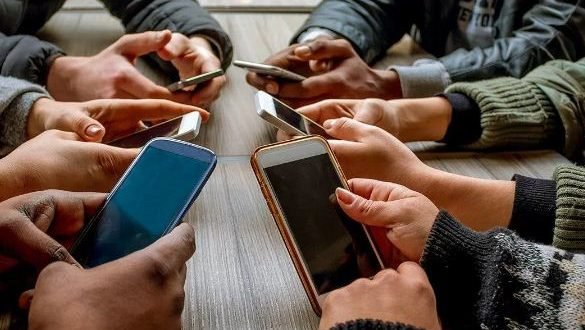Dopamine Hijack: Thriving In Toxic Abundance
Modern abundance is seriously hijacking humanity’s pleasure-seeking nature. The potent pleasure-desire system in our brains is mediated by the neurotransmitter dopamine. Whenever we are hungry, thirsty, bored, lonely, (or horny), it is low dopamine levels cause us to feel dissatisfied and drive us to fulfill our urges. When we acquire some marker of satisfaction (ala food, drink, sex, comfort, novel stimulation), our dopamine levels surge, we feel satisfied, and even high.
With all the conveniences of the modern world, one might think our dopamine receptors would be flooded and we’d be the happiest culture in history. Think again.
Our dopamine system was designed to be a losing game. The more rewards we capture, the more our body limits our dopamine transmission. It’s a bit like trying to fill a gratification bucket, except every time you add a cup, you also poke new a hole in it. Also, each time you use a cup, it gets smaller. In the evolutionary environment of scarcity, this “keep going like your life depended on it” messaging made sense. Those humans who kept furtively accumulating the latest life-sustaining resources had the most offspring. Ten thousand years ago, it wasn't advantageous to stop after finding one fruit tree, killing one buffalo, or having sex just once.
The more rewards we capture, the more our body limits our dopamine transmission. It’s a bit like trying to fill a gratification bucket, except every time you add a cup, you poke new a hole in it. Also, each time you use a cup, it gets maddeningly smaller.
If our dopamine had a motto, it might be “do that again—and don’t stop unless you find something better.”
Modern commercial interests have amassed astounding fortunes (and overwhelming political power) by leveraging new ways to yank on our inextricable desires for food, drink, and comfort. The resulting “toxic abundance” has been killing modern humanity at obscene rates for decades. The NIH estimates that 60% of premature deaths in the modern world are due to due to eating, alcohol, smoking, and inactivity.
Our insatiable dopamine system underlies all addictions. Highly addictive substances all spike dopamine, which begets an unavoidable dopamine crash. These dopamine crashes are withdrawal and lead to intense desires for more of whatever our primitive brains have learned may add a cup to our rapidly draining dopamine balance. We used to think that only chemicals like alcohol, nicotine, opiates and cocaine could be addictive. It took some time for psychologists to broadly recognize that modern permutations of food, sex, and gambling could be real addictions too.
The smart-phone and mobile internet amount to the needle & syringe for a broad array of drugified digital addictions. The gateway to huge dopamine spikes (and crashes) through social media, short-form videos, dating apps, pornography, and shopping is literally at our fingertips.
The smart-phone amounts to the needle & syringe for drugified digital addictions. The gateway to huge dopamine spikes (and crashes) through social media, short-form videos, dating apps, pornography, and shopping is literally at our fingertips.
What happens when modern abundance pokes so many holes in our gratification buckets that they become satisfaction sieves? We enter a near-constant state of dopamine withdrawal. This withdrawal causes us to feel tired, irritable, anxious, depressed, and unfulfilled. (Anyone feeling called out?) It should come as no surprise that anxiety and depression rates are now soaring in countries with the greatest material abundance.
Enter consumer profiling. If you’ve ever lost 4+ hours to social media divisiveness, binging youtubes or tiktok, then you too have fallen prey to computerized algorithms learning (and directing) what hooks you the most. These platforms provide (and withhold) an increasingly clearer picture of exactly what you’re looking for in order to keep you engaged for the maximum amount of time. There should be little doubt that AI will be leveraged in multi-pronged efforts to exert even greater control over how and where we spend our time (i.e. chasing dopamine in proprietary realms).
Worse, the epidemic of chronic dopamine withdrawal has brought many of us to become extremely vulnerable to stacking-up new addictions. Ever binge Netflix while eating and surfing on your phone?
Without perspective on modern toxic abundance and the futility of chasing dopamine highs, its dreadfully easy to get stuck feeling awful while mindlessly chasing dopamine spikes. I am seeing it in myself, my friends--and most disturbingly, in my daughter.
Phone addiction is isolating and inherently unsatisfying.
Thankfully there is a way out: The Dopamine Reset. The recipe is simple, but not fun. Avoid the main dopamine-spiking activities you’ve been using—for a MONTH. This austerity effectively plugs the holes in our gratification buckets as our body repletes our dopamine receptor function back to baseline levels. After the first 10-14 days (of feeling like shit), a profound sense of wellness begins to return and normal food and experiences start to become satisfying again. Then the trick is to self-regulate and limit exposure our biggest dopamine spikers (2 hours, twice a week max is recommended).
Want to speed the process up? Choose pain. It turns out that pain and pleasure are both processed in the same part of the brain. Painful stimuli (like strenuous exercise and cold plunges) provide a small hit of dopamine while balancing dopamine receptor function so that normal pleasures feel satisfying again.
For me, this would look like avoiding: sugar, alcohol, TV, social media, news, video-shorts (and a few apps others I’m conveniently neglecting to mention). On the flip side, it would mean committing to regular sleep, daily exercise, moderate food, and daily cold showers and dunks in the Puget Sound. For a full month.
What would it look like for you?
P.S. Where can we get working flip phones?




